
Living off the grid was once considered a fringe movement reserved for solitarians and individuals preparing for the apocalypse, but it has begun receiving a lot more attention and interest from the general population over the last several years.
As the cost of living continues to rise, political upheaval and social unrest becomes increasingly common, and the threat of new viruses grows more and more every day, many people are looking for an out- a way to get away from it all- and off-grid living is becoming increasingly attractive.
One man is showing just how easy- and cheap- off grid living can be, by teaching people how to build their own shipping container home.
What is Off-Grid Living?
The term “off the grid”, at its most basic, simply means disconnecting from your municipal power grid, however for many people the definition goes far beyond this baseline idea.
For most people, living off the grid means living sustainably and producing more resources than they consume. It means generating your own electricity and growing your own food. For others, it is a mode of survival, and allows them to protect their family in the case of an emergency situation.
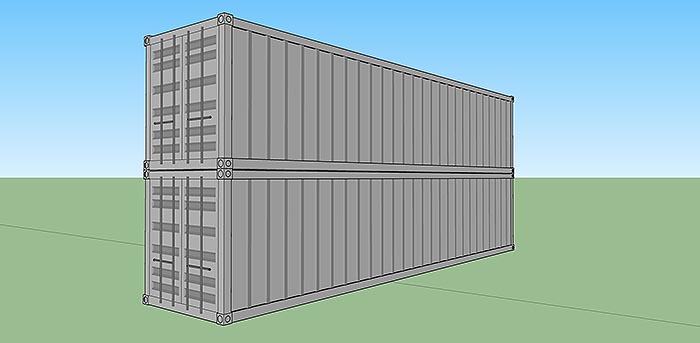
For the most extreme off-gridders, it is a political statement. A complete divorce from the systems that they deem to be oppressive. This form of primitive living becomes more of a statement of freedom and independence over anything else [1].
There are many different forms that off-grid living can take, depending on the preferences of the individual, and although many of us immediately conjure up images of pioneers, today’s off-grid homes can be quite advanced.
Read: 40 ft. Shipping Containers Transformed into a Spectacular Off-Grid Home
Build Your Own Shipping Container Home
Eric Whichman is the founder of offgridliving.net, who has designed a greenhouse home that can have you living your off-grid dream life for a mere 25 thousand dollars. The design, which uses two used shipping containers stacked one on top of the other, provides shelter, food, and water- the three basic criteria for an off-grid home.
It also features a greenhouse attached to the side of the home in which you can grow your own fruits and vegetables.
“I wanted to design something that met the basic criteria for self sufficiency while at the same time providing maximum living area, small footprint, and a large growing area to produce as much food as you could possibly eat,” explained Whichman [2].
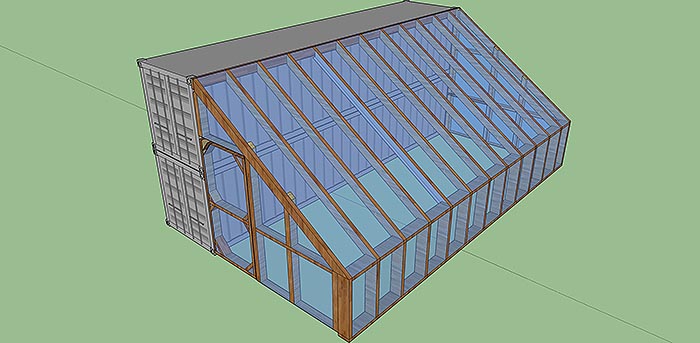
Whichman combined several of the systems used in the Earthship design with shipping container home and greenhouse design to ensure maximum energy-efficiency. The attached greenhouse makes growing your own food convenient and easy and helps to keep your home warm during the winter months.
Each shipping container is forty feet long and has 320 square feet of space on the inside. Stacking two containers on top of each other not only doubles the size of the living space, but also provides more height to allow for a larger greenhouse attachment.
The containers can be left bare or covered in siding to provide better insulation and prevent the home from getting too hot in the warm summer months, something that Whichman does highly recommend, particularly for those living in more arid climates. The siding, he notes, also gives the cabin a more rustic look.
“The beauty of this design is that it’s practical,” says Whichman. “It uses natural and recycled materials to build a cabin on the cheap.” [2]
Read: Project combines hemp and solar to go totally off grid
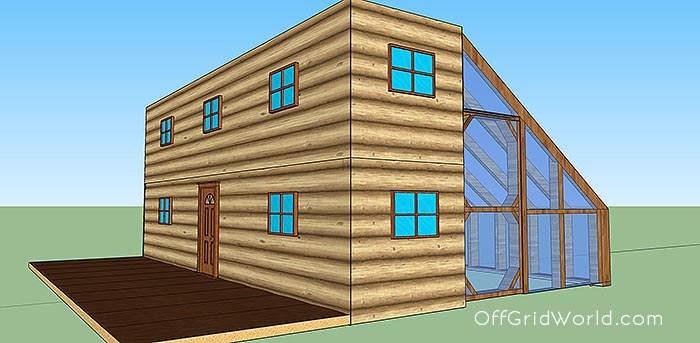
Cost Breakdown
While prices may vary depending on your sources, Whicman most of the required materials, including the wire and pipe for electrical and plumbing, can be purchased for a few thousand dollars. The cost breakdown is as follows:
- Container: 2500 dollars plus freight to your location, per container.
- Crane (to stack the containers): approximately and extra two thousand dollars.
- solar panels, mounting brackets, charge controller, batteries, and electrical system: five to ten thousand dollars, depending on the size of the system and your power needs.
- Total cost (containers plus greenhouse materials, wiring, plumbing, siding, insulation, flooring, etc.): $25,000 [2].
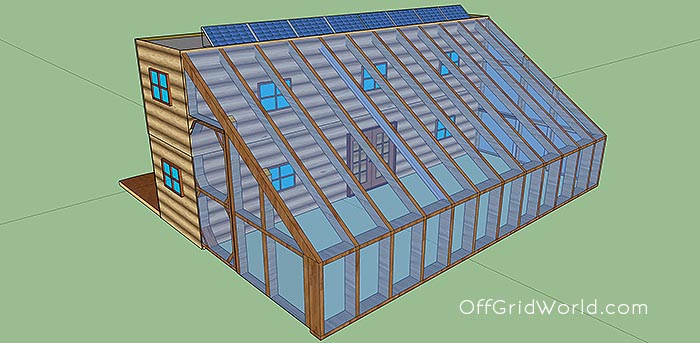
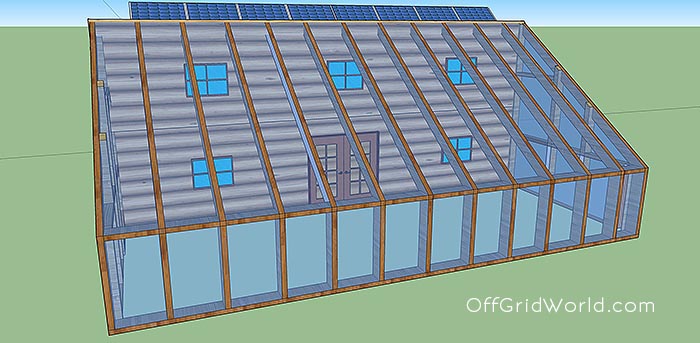
Precautions
Whichman cautions that this kind of project can be very dangerous if you’re not careful, or if you don’t know what you’re doing. Cutting through corrugated metal is risky, since it’s heavy and could fall on you while you’re cutting it.
“Use proper safety equipment and if you’ve never modified a shipping container for hire someone to do it for you,” warns Whichman. “Always get help from someone with experience.” [2]
For full instructions for how to build your own off-grid shipping container home, go to offgridliving.net.
Keep Reading: Pandemic Leads To Urban Exodus As Families Turn To Self-Reliance And Off-The-Grid Living
The post 640-Square-Foot Solar-Powered Shipping Container House with Greenhouse for $25,000 appeared first on The Hearty Soul.